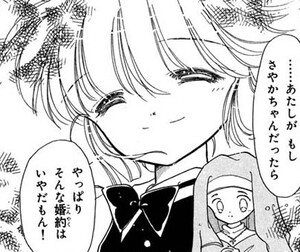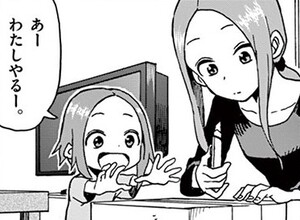Personal Pronouns
Personal pronouns are a key element of the Japanese language. Whereas the English “I” is a simple self-reference, Japanese personal pronouns convey politeness levels, gender, regional flavor, age, and relationship dynamics. The same person may use different pronouns depending on the situation and audience. Personal pronouns are often omitted when the subject is clear from context.
Note that the information below may be skewed toward usage in manga, and may deviate from real life usage.
私: Neutral and Polite
私 can be considered the default polite pronoun. Males typically limit their usage of 私 professional and respectful contexts, finding it to be overly refined or too detached when used among peers. Females are likely to use 私 even in casual situations.
僕: Casual and Masculine
僕 is more informal, and is primarily used by males. It’s commonly used among boys and young men, and when relaxed social circles. It may feel immature or childish if used by older men in serious situations.
Due to its masculine vibe, its rare usage by a female may signal a tomboyish or rebellious personality.
俺 Rough and Intimate Masculine
俺 is more informal and masculine than 僕. It is often associatd with toughness, confidence, and closeness. Its usage is fairly exclusive to men, especially when among close male friends.
あたし: Cutesy and Feminine
あたし is similar to 私, but is more feminine, used by females in informal settings with friends or family. It’s popular among teens and young adults, but old women are likely to avoid it as being too cutesy or unrefind.
わたくし: Highly Formal
わたくし is more formal than 私. It may be used by males, but is more common to females. In casual chat, it comes of as pretentious.
うち: Cozy and Feminine
うち is cozy and homey, with a folksy charm. It’s mainly used by females, especially in the Kansai region. Outside the region, it may be used playfully for cuteness.
Examples
あたし from a middle school girl

Seira learns that Sayaka’s parents have forced her into an arranged marriage engagement, even though she likes Asuka Jr. Seira relays this to Meimi, saying if Saint Tail steals the gifted wedding veil from Sayaka’s home, the engagement will be called off. Before Meimi sets out, Seira confirms her intention to go through with the theft.
- セイント・テール:
- 「あたしが もし さやかちゃんだったら やっぱり そんな婚約はいやだもん!」
- “If I were Sayaka-chan, sure enough, I'd hate such an engagement!”
Meimi often doesn’t use a personal pronoun due to context not calling for it, but when she does, she uses あたし both in narration and when with Seira. Most of Meimi’s female classmates use あたし as well.
わたし from a teenage girl

Professor Agasa convinces Ran to take Conan in to stay with her and her father.
- 蘭:
- 「ここよわたしの家… そして今日からコナン君の家…」
- “It's here. My home... And starting today, your home...”
Although there are characters this series who use 私, it’s written out as わたし when Ran uses it. This stylistic choice by the author could be to reflect that she’s not yet an adult.
わたし from a very young child

In a bonus story, Takagi is shown as an adult with a child. A package arrives, and Takagi prepares to open it with a box cutter.
- ちー:
- 「あー わたしやるー」
- “Ah, I'll do it!”
It’s common for very young children to refer to themselves by name, as is the case for Chi during later appearances. Since she hadn’t been named yet on her first appearance here, she instead refers to herself as わたし. The lack of kanji is stylistic of dialogue for very young characters. (In the next panel, Chi isn’t allowed to open the box due to the box cutter being dangerous.)


